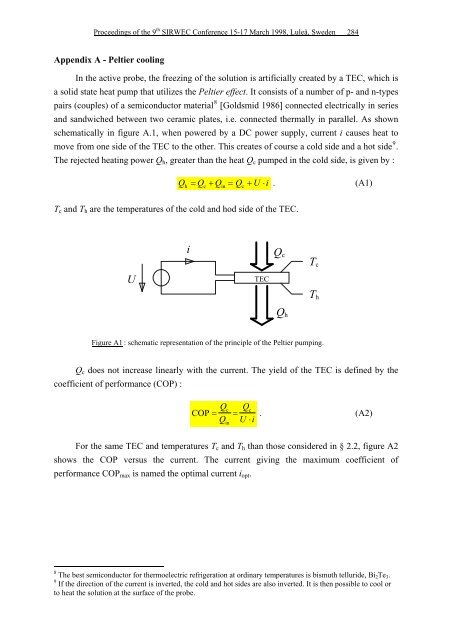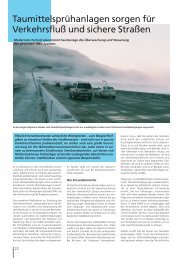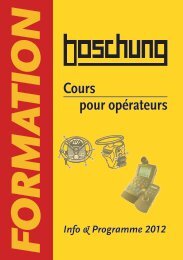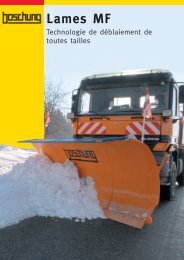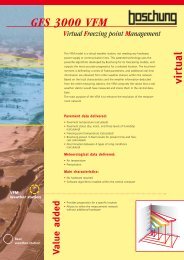Physical bases of freezing point measurement using ... - Boschung
Physical bases of freezing point measurement using ... - Boschung
Physical bases of freezing point measurement using ... - Boschung
You also want an ePaper? Increase the reach of your titles
YUMPU automatically turns print PDFs into web optimized ePapers that Google loves.
Proceedings <strong>of</strong> the 9 th SIRWEC Conference 15-17 March 1998, Luleå, Sweden 284<br />
Appendix A - Peltier cooling<br />
In the active probe, the <strong>freezing</strong> <strong>of</strong> the solution is artificially created by a TEC, which is<br />
a solid state heat pump that utilizes the Peltier effect. It consists <strong>of</strong> a number <strong>of</strong> p- and n-types<br />
pairs (couples) <strong>of</strong> a semiconductor material 8 [Goldsmid 1986] connected electrically in series<br />
and sandwiched between two ceramic plates, i.e. connected thermally in parallel. As shown<br />
schematically in figure A.1, when powered by a DC power supply, current i causes heat to<br />
move from one side <strong>of</strong> the TEC to the other. This creates <strong>of</strong> course a cold side and a hot side 9 .<br />
The rejected heating power Qh, greater than the heat Qc pumped in the cold side, is given by :<br />
Qh = Qc + Qin = Qc + U ⋅ i . (A1)<br />
Tc and Th are the temperatures <strong>of</strong> the cold and hod side <strong>of</strong> the TEC.<br />
U<br />
i<br />
TEC<br />
Figure A1 : schematic representation <strong>of</strong> the principle <strong>of</strong> the Peltier pumping.<br />
Qc does not increase linearly with the current. The yield <strong>of</strong> the TEC is defined by the<br />
coefficient <strong>of</strong> performance (COP) :<br />
Qc<br />
Qc<br />
COP = =<br />
Q U ⋅i<br />
in<br />
Qc<br />
Qh<br />
Tc<br />
Th<br />
. (A2)<br />
For the same TEC and temperatures Tc and Th than those considered in § 2.2, figure A2<br />
shows the COP versus the current. The current giving the maximum coefficient <strong>of</strong><br />
performance COPmax is named the optimal current iopt.<br />
8 The best semiconductor for thermoelectric refrigeration at ordinary temperatures is bismuth telluride, Bi2Te3.<br />
9 If the direction <strong>of</strong> the current is inverted, the cold and hot sides are also inverted. It is then possible to cool or<br />
to heat the solution at the surface <strong>of</strong> the probe.


